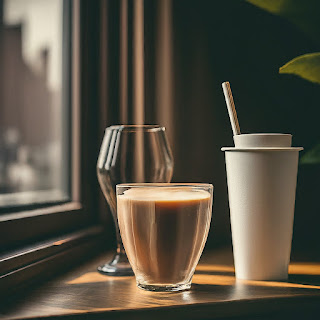When it comes to keeping your hot beverages warm, not all cups are created equal. To determine which type of cup performs the best, we need to dive into the science of heat transfer and how different materials manage it. Let’s explore this in detail.
Understanding Heat Transfer
Heat transfer, in essence, is how heat moves from one place to another. There are three main methods through which this happens:
- Conduction: This is heat transfer through direct contact. For example, The heat from a hot metal spoon is conducted to your hand when you touch it.
- Convection: Heat moves through fluids like air or water as the warmer parts rise and cooler parts sink, creating a circulation. Imagine how hot air balloons work.
- Radiation: Heat travels in waves, like those from the sun, without needing a medium to move through. This is how you feel warm without touching a hot object.
Comparing Cup Materials
To find out which cup keeps your drink hottest, let’s compare common cup materials based on their heat transfer properties:
| Material | Heat Transfer Properties |
|---|---|
| Paper | Poor insulator. Heat escapes quickly. |
| Plastic | Insulation varies. Generally fair but inconsistent. |
| Styrofoam | Excellent insulator. Minimizes heat loss effectively. |
| Glass | Conducts heat well. Drinks cool down faster compared to some other materials. |
Factors Affecting Heat Retention
Several factors influence how well a cup keeps your drink warm:
- Material Thickness: Thicker materials usually offer better insulation. For example, Double-walled cups excel at keeping drinks hot compared to single-walled ones.
- Cup Design: Features such as lids or double-walled construction enhance heat retention by reducing heat loss through conduction and convection.
- Liquid Temperature: The hotter the liquid when it’s poured into the cup, the longer it will stay warm.
- Ambient Temperature: In cooler environments, heat loss is faster, so a well-insulated cup can make a big difference.
Conclusion
Based on our exploration, Styrofoam cups generally excel at keeping drinks hot. Their insulating properties significantly reduce heat loss through all three methods of heat transfer: conduction, convection, and radiation.
However, there are some nuances to consider:
- Plastic: This material can vary greatly. Some types of high-density plastics are quite effective at insulating.
- Glass: Double-walled glass cups offer much better insulation than standard single-wall glass cups.
- Paper: Typically a poor insulator, paper cups will not keep drinks hot for long.
Additional Considerations:
- Environmental Impact: Styrofoam, while effective, is harmful to the environment. Opt for reusable cups or paper cups made from recycled materials when possible.
- Taste: Some people notice a change in the taste of their drink when using Styrofoam cups.
In the end, the best cup for keeping your drink hot balances heat retention with other factors like environmental impact and personal taste preferences.
 |
| Did you know? Styrofoam cups are excellent insulators, often used in scientific experiments to maintain stable temperatures by minimizing heat transfer! |
For more information on heat transfer, check out these resources:




0 Comments